Horizontal hydraulic fractures in ResFrac

Horizontal hydraulic fracture propagation is believed to be widespread in shale plays where the frac gradient approaches the overburden – such as the Vaca Muerta, Utica, and Montney. However, horizontal propagation is nearly always ignored in hydraulic fracture modeling. In ResFrac, we are obsessed with ‘getting the physics right’, and so naturally, we extended our simulator to handle horizontal fracturing. The first version of this new capability was released earlier this year. We are eager to start collecting feedback from users, which will help us to fine tune the algorithm and workflow.
Welcoming Dr. Thomas Finkbeiner to the team as a Senior Technical Advisor

ResFrac is honored to welcome Dr. Thomas Finkbeiner to the team as a Senior Technical Advisor. Having lived many years in the region and consulted with Saudi Aramco and others, Thomas brings valuable technical and regional expertise to the ResFrac team. We look forward to his contribution as we develop and penetrate the rapidly growing Middle East market.
Notable papers from the 2024 SPE Hydraulic Fracturing Technology Conference

Last week wrapped another outstanding SPE Hydraulic Fracturing Technology Conference. Every year, I write a blog post highlighting notable HFTC papers. Here is this year’s edition! As in past years, this is not an attempt to pick the ‘best’ papers. It’s a selection of papers that I personally found insightful, based on my own interests and specialization.
Introducing StageOpt – State-of-the-Art Calculations for Optimizing Perforation Design
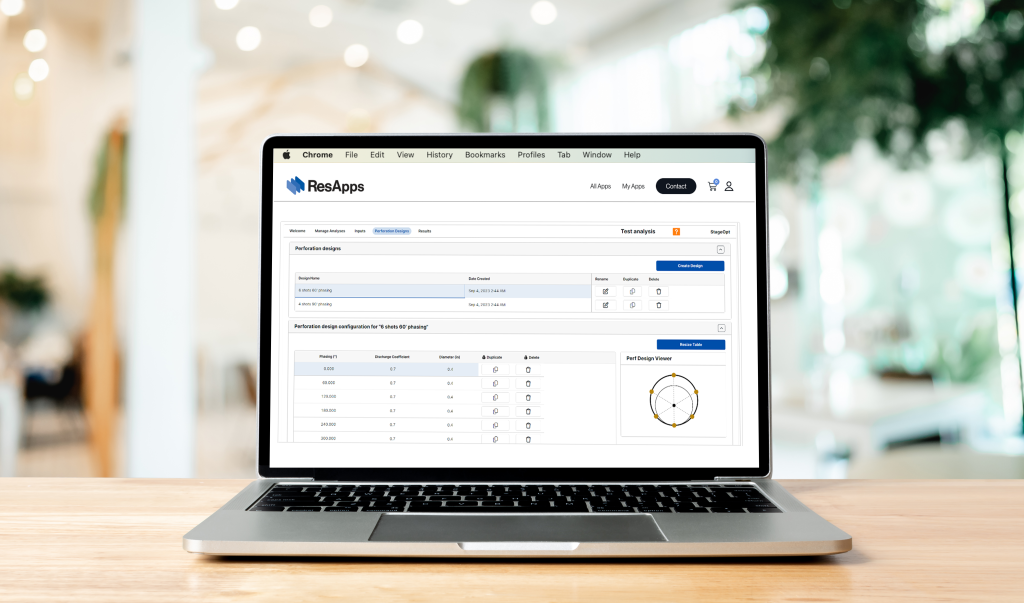
ResFrac Corporation is built around the ResFracPro simulator, which is the only commercial simulator that fully integrates genuine hydraulic fracture modeling and reservoir simulation. Now, we are broadening to build a complementary suite of apps – which we are called ‘ResApps.’
Recent Recorded Talks on EGS and DFIT

Below are links to watch two recently recorded talks. The first was a presentation with ThinkGeoEnergy discussing the impressive results from Fervo Energy’s recent Project Red pilot. The second was a presentation with whitson summarizing the URTeC-2019-123 compliance method procedure for interpreting DFITs. If you are interested in either topic, please check them out!
Practical guidelines for DFIT interpretation using the ‘compliance method’ procedure from URTeC-2019-123
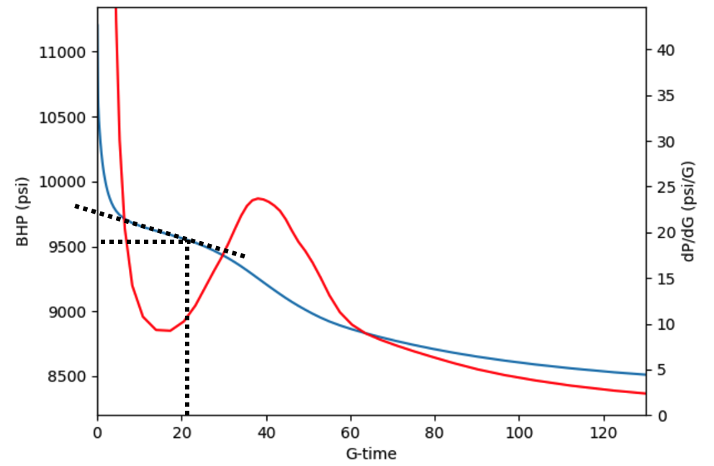
This blog post provides practical tips for interpreting Diagnostic Fracture Injection Tests (DFITs) using the ‘compliance method’ procedure initially developed by McClure et al. (2016) and refined in the paper URTeC-2019-123, which summarized results from a joint industry study performed with a consortium of operators.
Thermoelastic fracturing and buoyancy-driven convection – Surprising sources of longevity for EGS circulation
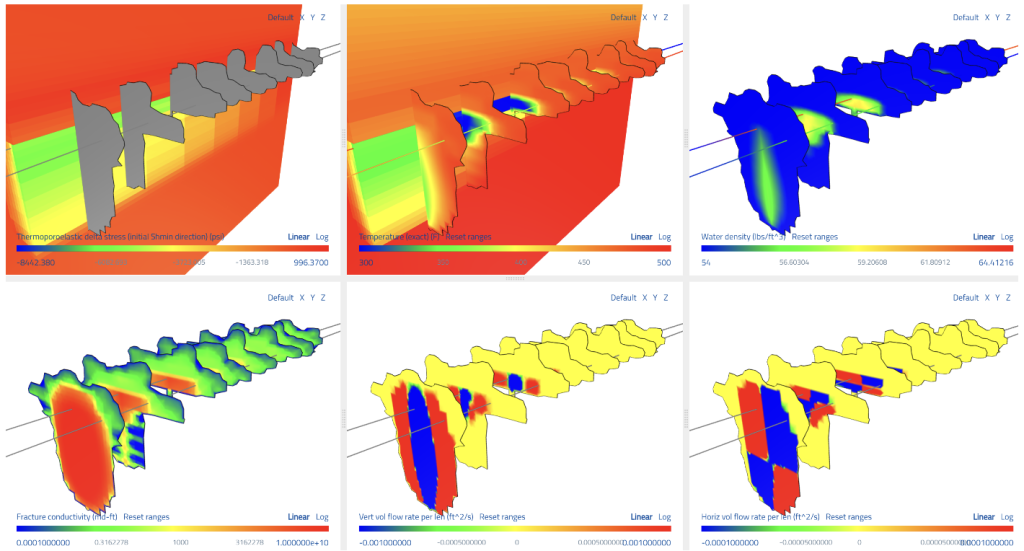
To maximize value from an EGS system, we need to optimize flow rate, well spacing, and well configuration. These engineering decisions will make the difference between a money loser and a cash cow. I’ve recently run ResFrac simulations of long-term EGS circulation and observed some surprising and intriguing results.
Fervo Energy’s ‘Project Red’ Results Are a Historic Breakthrough for Geothermal Energy – What Comes Next?
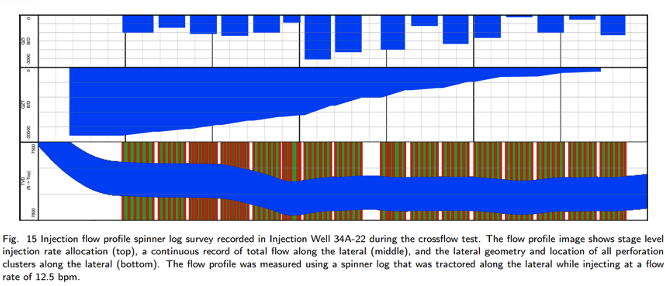
Fervo Energy announced the results from their ‘Project Red’ pilot in northern Nevada (Norbeck and Latimer, 2023; Ma, 2023). The results are spectacular. For nearly 50 years, the goal of Enhanced Geothermal Systems (aka, Hot Dry Rock) has been to convert low permeability, hot formations into economically viable geothermal reservoirs (Murphy et al., 1977). Success has been elusive. During stimulation, flow tends to localize into a small number of flowing fracture pathways. This limits the flow capacity and heat sweep efficiency of the resulting reservoir.
ResFrac at the Comrades Marathon in South Africa (an Ultramarathon)
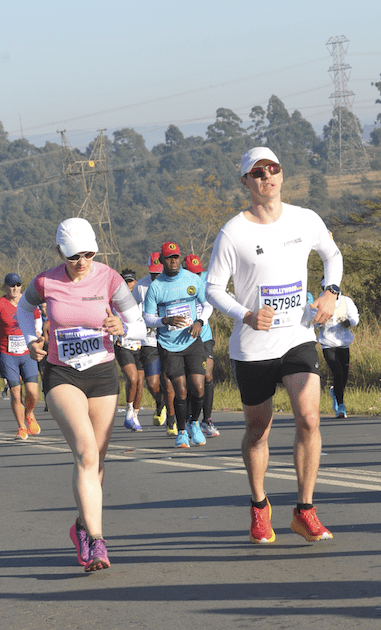
Comrades Marathon is the world’s largest and oldest ultramarathon. The first race was in 1921. The number of registrants for this year was capped at 20k. The marathon runs from the city of Durban to Pietermaritzburg (“up” run) or in the other direction (“down” run). The “down” run is a little bit longer at around 90 km, while the “up” run is 87 km. This year we did the “down” run, but it was shortened to 87.7 km or 54.5 miles. “15 minutes less of pleasure” – as one of my friends said.
Impact of well orientation on well productivity
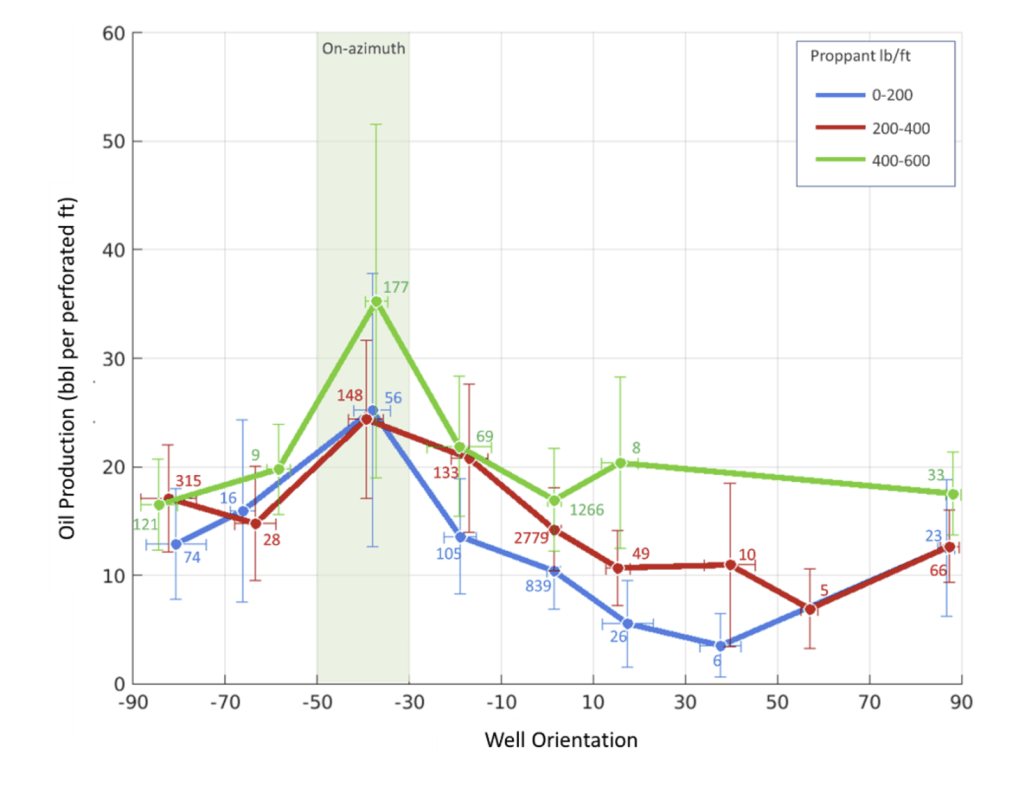
Hydraulic fractures tend to propagate in a plane that is perpendicular to the least principal stress, as noted by Hubbert and Willis in 1957. As a result, unconventional oil and gas wells are typically drilled in the direction of Shmin to maximize drainage area. However, in some regions, due to acreage constrains by operators, wells are drilled in different directions, regardless of the stress orientation to maximize acreage production by maximizing the number of wells per acreage.
Recorded ARMA HFC 2023 Series Presentation– Optimization of Perforation Phasing for Improving Uniformity of Proppant Distribution Between Clusters
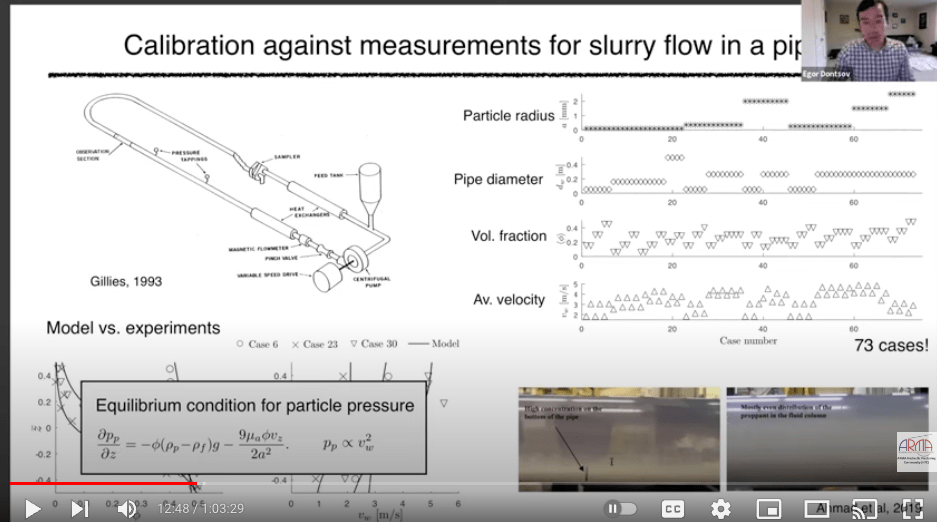
This ARMA Hydraulic Fracturing Community (HFC) presentation summarizes the work on proppant transport in horizontal perforated wellbores. Specifically, it discusses the model for proppant distribution between perforations depending on their orientation and location within the stage, optimal configurations are proposed, and performance is evaluated.
ResFrac at the Breckenridge Imperial Challenge
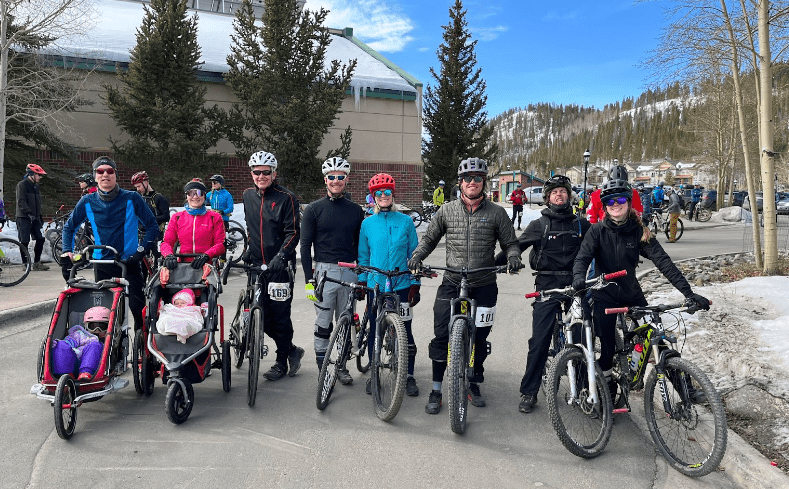
It’s that time of year again for our ResFrac team to embark upon the Imperial Challenge in Breckenridge, CO! As with last year, Egor, Dirk (ResFrac investor), and Garrett tackled the challenge this year. The Imperial Challenge is an annual triathlon where racers bike or run from the town of Breckenridge 6 miles and 850 feet up to the base of the Breckenridge ski resort, then skin (ski uphill) 3000 ft to the peak of the resort at 12,998 ft, then… ski off the other side.
Technical barriers for deep closed-loop geothermal
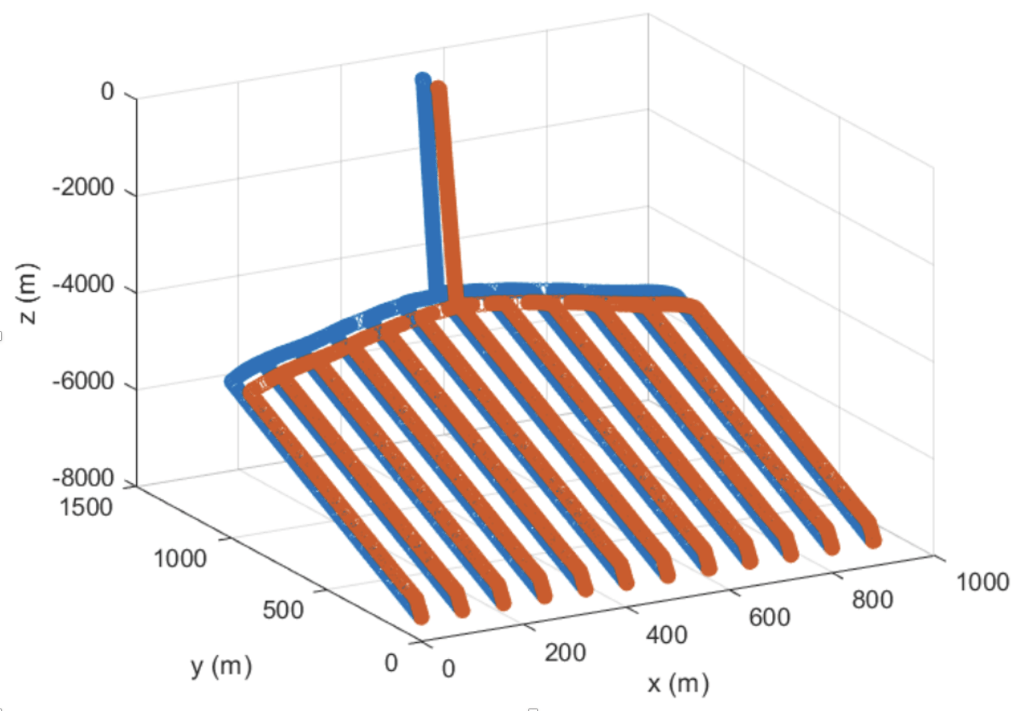
This is the most exciting time in my lifetime for geothermal. There are many, many innovative things happening. To name a few – promising new approaches to Enhanced Geothermal Systems, geothermal projects in sedimentary and lower enthalpy formations, new approaches for geothermal exploration, lithium extraction from produced brines, geothermal energy storage, integrations with CO2 storage and capture, and new technologies for producing energy from hot water that is coproduced with oil and gas. However, this post is about a concept about which I remain skeptical – deep closed-loop heat exchangers (McClure, 2021). These designs are sometimes called ‘Advanced Geothermal Systems,’ AGS (Malek et al., 2022).
Modeling simulfracs and subsurface implications
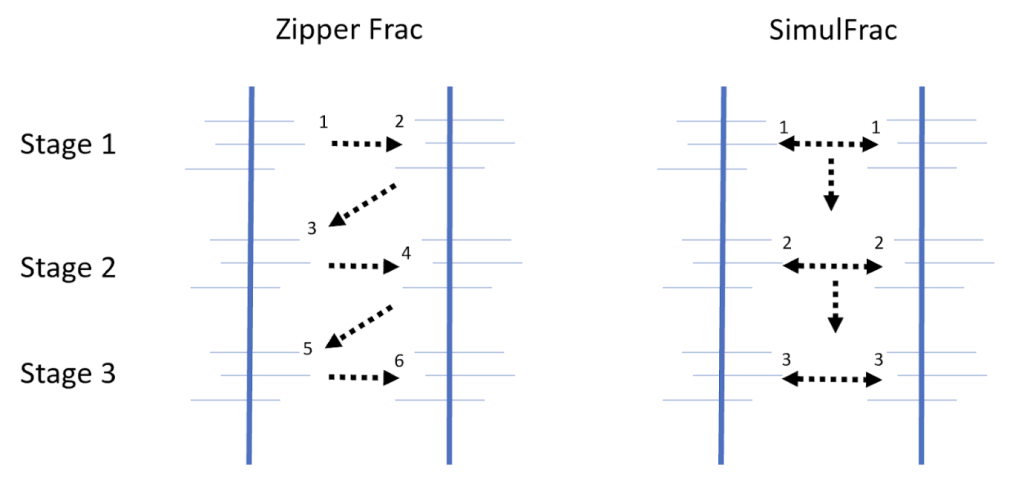
Simulfrac’s are growing in popularity (see 2021 JPT article for when the trend was just gaining momentum). The idea is that one pumping crew can treat two wells simultaneously versus one well at a time. As such, a frac crew may zipper four wells at a time versus two. At ResFrac we are seeing an increase in simulfrac interest across our consulting and license customers. Simulfrac’ing wells within the ResFrac software is simple to set up without any complicated modifications – so this makes ResFrac an ideal platform to investigate the effects of simulfracs.
A New Approach for Interference Test Analysis: Quantifying the Degree of Production Impact
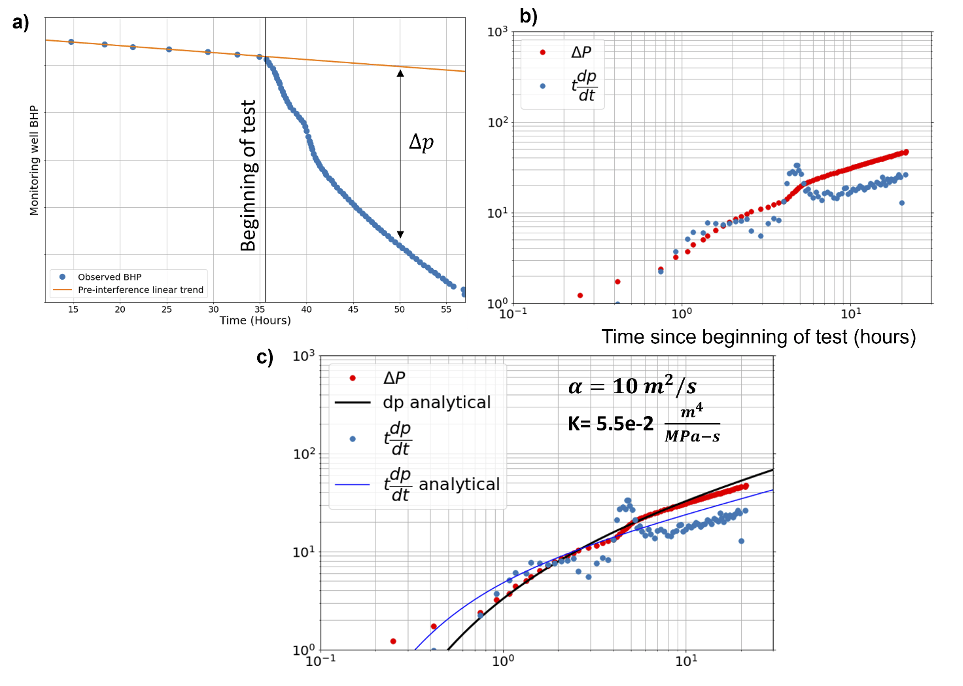
This blog post summarizes a new procedure for interpreting interference tests in shale. The full procedure and a detailed writeup are provided by Almasoodi et al. (2023). Interference tests are one of the most effective diagnostics for assessing communication between neighboring wells. This information is critical for optimizing completion design and well spacing.
Optimization of perforation orientation for achieving uniform proppant distribution between clusters
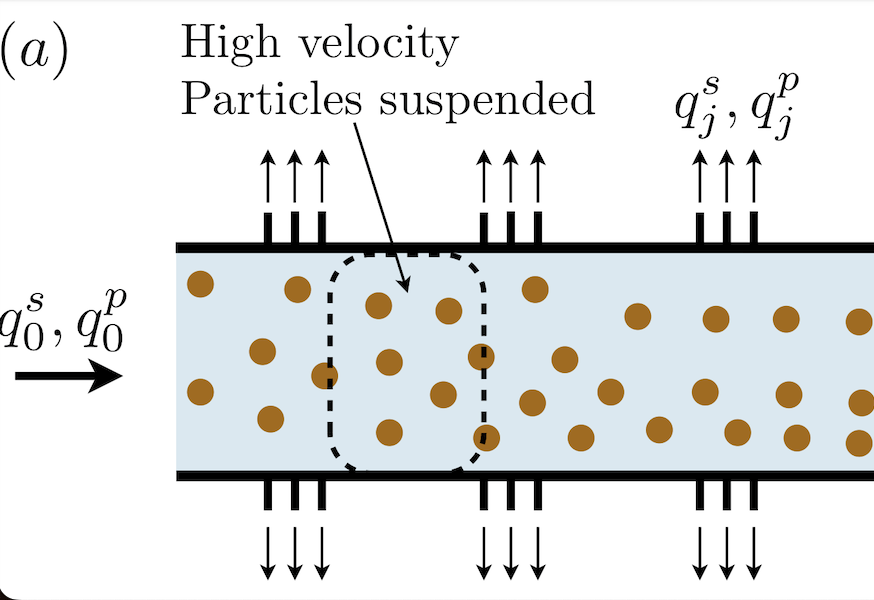
Previously, a mathematical model for the problem of slurry flow in a perforated wellbore was described and the underlying physical mechanisms were discussed. The purpose of this blog post, on the other hand, is to couple the model with an optimization algorithm to investigate optimal perforation orientations that lead to the desired uniform proppant distribution between perforations. A brief description of the model is added at the beginning to cater for readers who are not familiar with the previous blog post.
Interesting papers from the 2023 SPE Hydraulic Fracturing Technology Conference
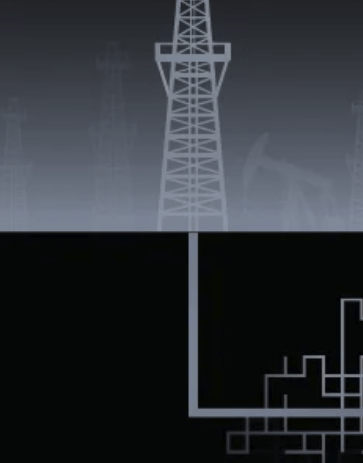
The 2023 SPE Hydraulic Fracturing Technology Conference was last week, and as usual, it had an outstanding lineup of papers and speakers. This blog post has a brief lineup of some of the papers that I found most interesting. As in past years, this rundown focuses on papers that I found interesting, based on my own personal interests. Usually, I am most interested in papers that improve our understanding ‘what’s going on’ in the subsurface. Also, I coauthored a paper at the conference, so naturally, I can’t help but include it on this list!
Proppant distribution between perforation clusters
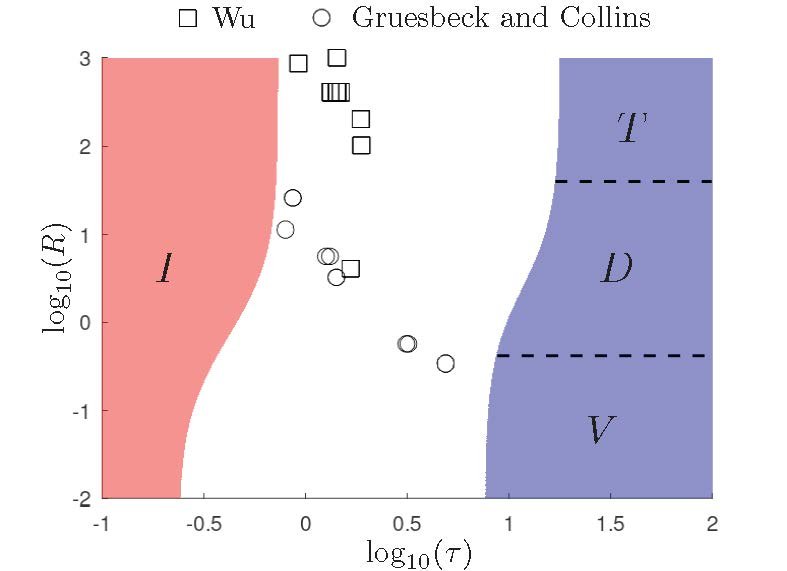
This blog post summarizes the model for calculating proppant distribution between perforation clusters. A very detailed description of the model and literature review are available in [1]. The purpose here is to outline the model and its main features, to demonstrate the comparison with some of the available data (more comparisons in [1]), as well as to discuss limiting cases and sensitivities to various parameters. This blog post is solely focused on presenting the mathematical model. In future work, the results will be applied to practical optimization decisions.
Simulating ‘Fractal Fracture Swarms’ in a General-Purpose Reservoir Simulator
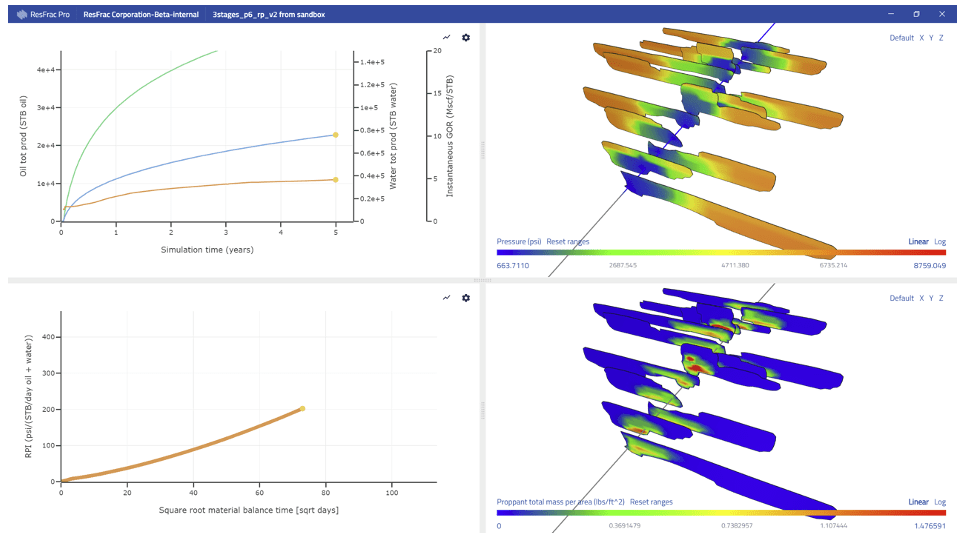
This blog post describes a new capability in ResFrac to capture the effect of ‘fracture swarms’ on production decline trends. Based on work from Acuna (2020), the idea is that variable spacing between fractures causes a gradual onset of production interference. Fractures in a swarm may be numerous and tightly spaced, so rather than representing each individual crack in the model, we treat each swarm as a single crack and use a numerical technique to capture their effects. In ResFrac, this capability is useful because it provides another mechanism for explaining (and matching) production drawdown trends. For further details, refer to Section 19.10 from McClure et al. (2022).
How to Diagnose False Radial Flow in a Diagnostic Fracture Injection Test (DFIT)
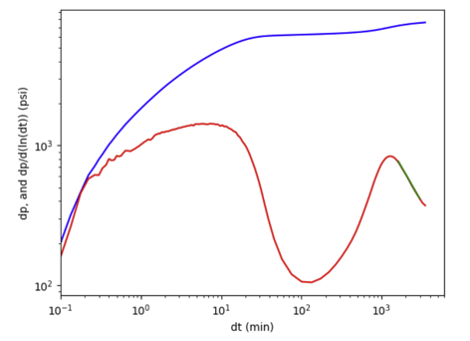
Genuine radial flow is rare in shale DFITs. If it does occur, it is typically observed in tests with very low injection volume (less than 10-20 bbl), unusually long shut-in (longer than one week), and relatively high permeability (greater than one microdarcy). Genuine radial flow should only be diagnosed if it occurs after an extended (at least one log cycle) period of after-closure linear flow. If ‘false radial’ flow is misdiagnosed and used to estimate permeability, it leads to a large overestimate (10-100x).
Reflections from the 2022 Geothermal Rising Conference

This is an exciting time for EGS. Multistage hydraulic fracturing has tremendous potential to improve the productivity of geothermal wells in low permeability formations. Projects are happening right now to test this concept in full-scale EGS wells. If they prove successful, we could soon see a major increase in geothermal energy production.
Automated history matching to fracture geometries as measured by Volume to First Response (VFR): A Tutorial
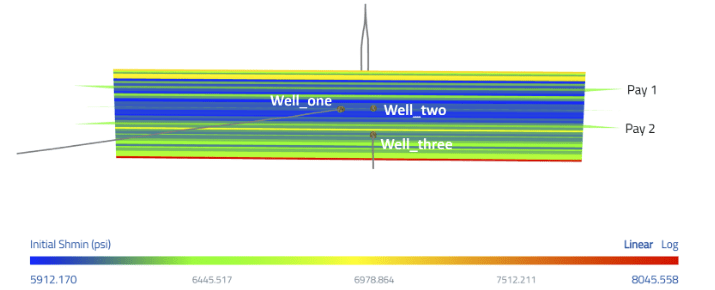
In this post, I will walk through a simple example of using SWPM to calibrate the fracture geometries of a hypothetical data set leveraging the ResFrac Automated History Matching functionality to expedite the workflow. In a follow-on post, I use the model to demonstrate some intuitions on fracture geometry using the Sensitivity Analysis functionality as well as some nuances of VFR calibration.
Highlights on propagation from preexisting fractures in ResFrac
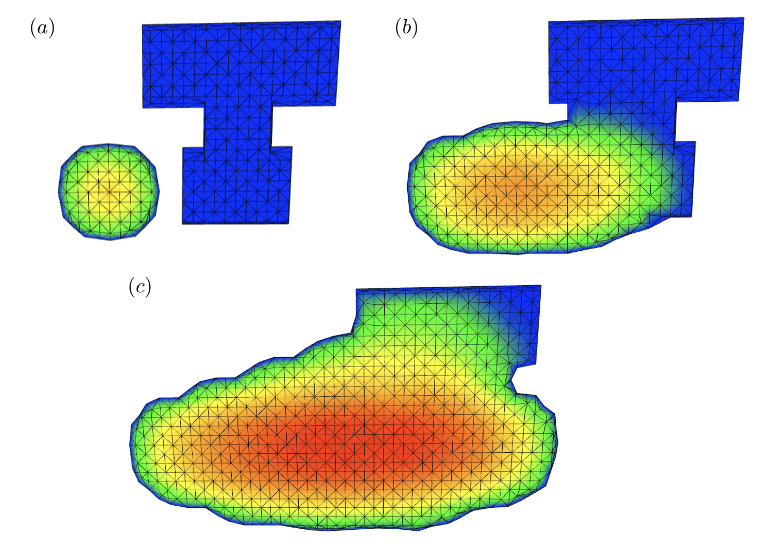
The purpose of this blog post is to cover recently developed ResFrac capability that allows investigation of the effect of natural fractures on hydraulic fracture propagation. While this option has always been available for the ‘discrete’ propagation algorithm, now it also has become available for the ‘continuous’ algorithm. There are some noticeable changes compared to the previous implementation and they are covered next.
ResFrac’s Automated Economic Optimization Tool
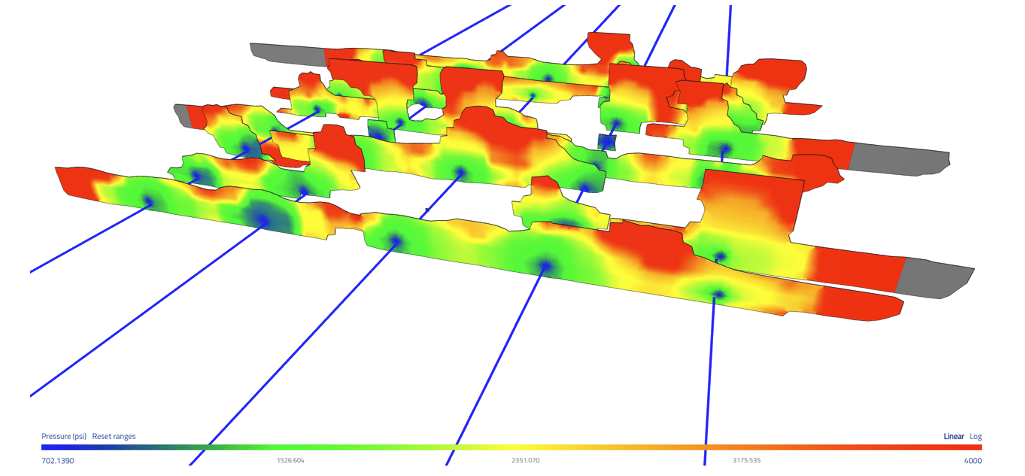
ResFrac’s automated optimization tool allows you to quickly and easily identify the economically best well spacing and frac design. This blog post steps through a simple demo of our built-in economics engine that is similar to those used by commercial software in the industry. It accounts for details such as working interest, different types of taxes, time-varying operations cost, etc.
2022 ResFrac Annual Symposium
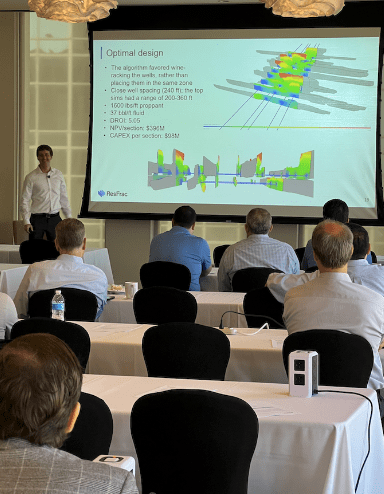
Last week we held our Fourth Annual ResFrac Symposium. The premise of the event is to bring together ResFrac users to share use cases, best practices, and general developments in the industry. This year was our biggest yet, with nearly 100 people joining either in-person or online throughout the day-long event, representing 26 different oil, gas, and geothermal operating companies, seven universities, and several service company collaborators.
A shale booster shot: ‘Re-fracs’ rise as cheap way to lift U.S. oil output
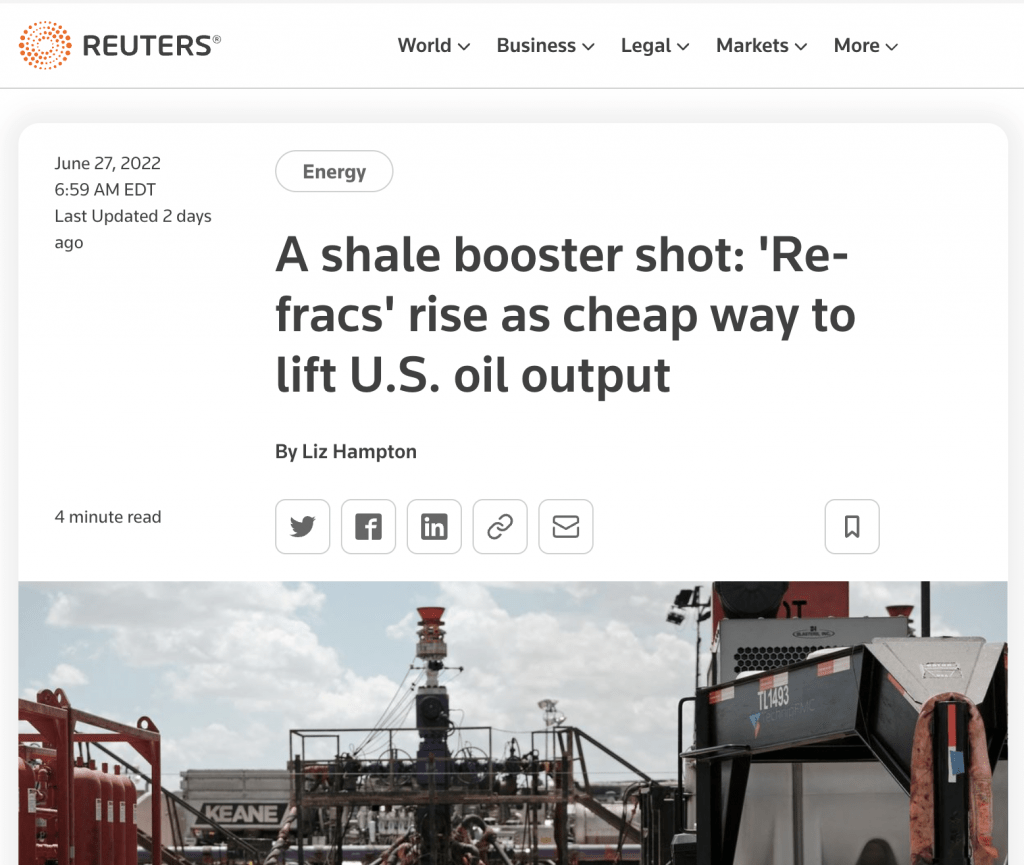
June 27 (Reuters) – U.S. shale oil producers are returning to existing wells and giving them a second, high-pressure blast to lift output for a fraction of the cost of finishing a new well. These “re-fracs” are taking hold as shale oil producers look to take advantage of $100 a barrel crude without making big investments in new wells and fields.
Automated History Matching and Economic Optimization of an Eagle Ford Refrac
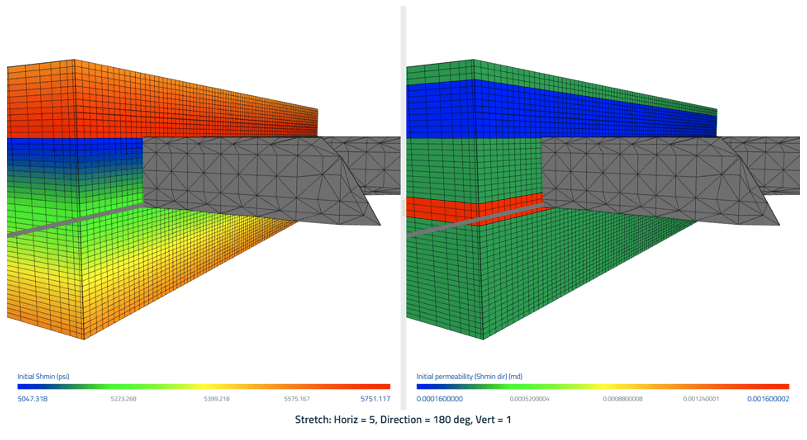
In this blog post, we review a refracturing and economic optimization case study. The model and history match are loosely based on “SPE Data Repository Well #1,” a publicly available refracturing and production dataset from the Eagle Ford shale. This post extends the analysis that we presented at a recent SPE workshop, “What New for PTA and RTA”.
ResFrac Retreat in Colorado
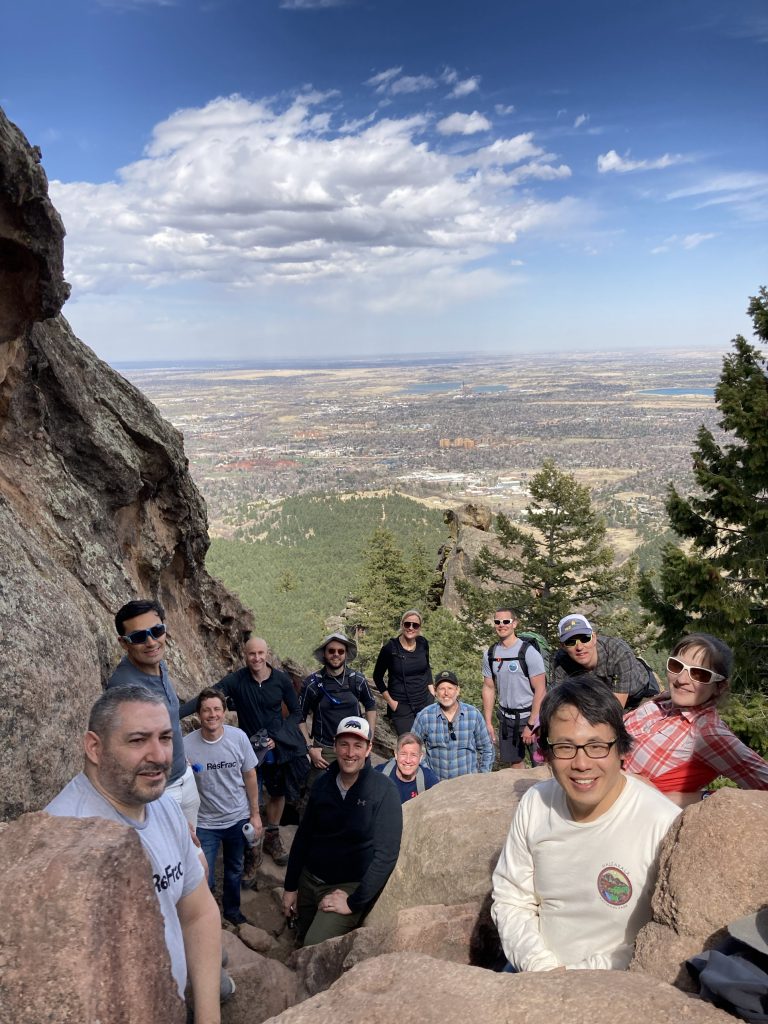
For the first time in more than two years, the entire (almost!) ResFrac team gathered in Denver. We mixed education (thank you to our friends at Liberty Services for showing us the nuts and bolts of frac’ing)…… with fun.
Commentary on Four New DFIT Papers: (a) Direct In-Situ Measurements of Fracture Opening/Closing from the EGS Collab Project; (b) Comparison of Stress Measurement Techniques from the Bedretto Project; (c) a Statistical Summary of 62 DFITs Interpretations Across Nine Shale Plays; and (d) A Different Perspective: An Article Advocating the Use of the Tangent Method
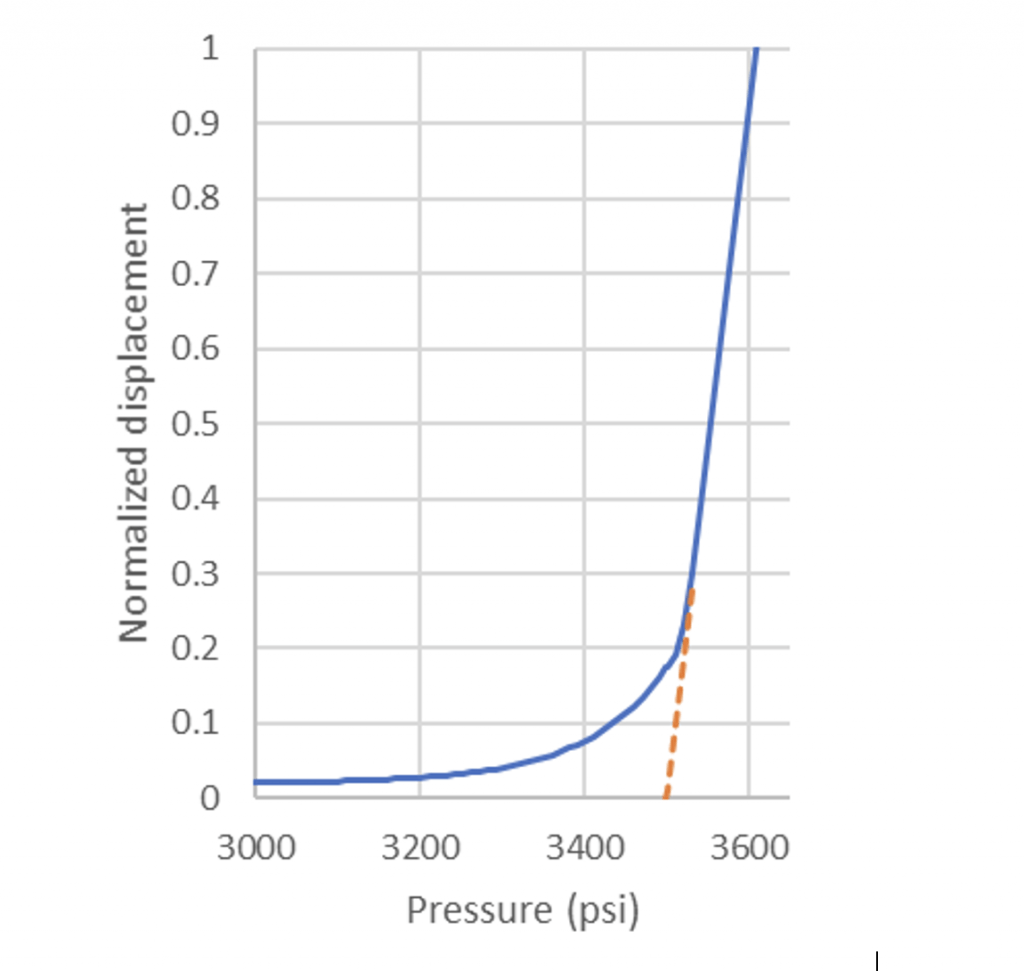
This post provides commentary on recent four papers on diagnostic fracture injection testing (DFIT). The first paper uses in-situ deformation measurements to directly observe fractures opening and closing during fracture injection-falloff tests (Guglielmi et al., 2022). The second compares various stress measurement techniques in a series of fracture/injection tests from the Bedretto project (Bröker and Ma, 2022). The third statistically reviews results from applying the interpretation procedure from McClure et al. (2019) to 62 DFITs across nine different shale plays (McClure et al., 2022). The fourth is an op-ed written in JPT (Journal of Petroleum Technology) by an advocate of the tangent method for estimating DFIT closure stress (Buijs, 2021; 2022). This article presupposes that the reader already has familiarity with these topics. If you would like more background, please refer to McClure et al. (2019).
Notable Papers from SPE HFTC 2022

The SPE Hydraulic Fracturing Technology Conference (HFTC) was last week. There were tons of great, practically relevant, papers. People are really locked-in on the key value drivers. This blog post gives a sampling of a few of the papers that I found most interesting. I don’t discuss any of the ResFrac papers because they were in a previous blog post.
Four ResFrac papers at HFTC 2022!

We at ResFrac are coauthoring four papers at HFTC. The papers describe a parent/child case study performed with Devon in the SCOOP/STACK, our new automated history matching and economic optimization tools, a new crack propagation algorithm designed to improve numerical accuracy and handling of thin layers, and a modeling study on application of multistage hydraulic fracturing for geothermal energy extraction.
Understanding fracture morphology
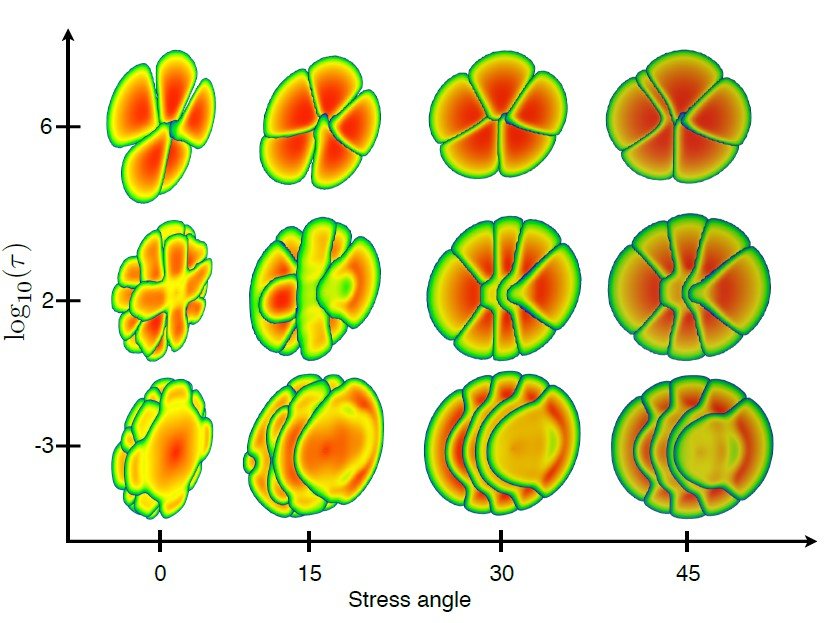
Field scale hydraulic fracture simulations reveal a variety of complex fracture geometries. Very often stress interaction between the fractures leads to very asymmetric fracture growth within a stage. At the same time, for some other cases, all the fractures are more regularly shaped and symmetric. This blog post presents results of numerical simulations and analysis demonstrating how fracture morphology changes versus problem parameters for some fundamental cases. The results can be used to better understand the observed fracture complexity in a field scale simulation or as a guideline to achieve the desired fracture morphology.
ResFrac Endurance Team takes on The Triple Bypass
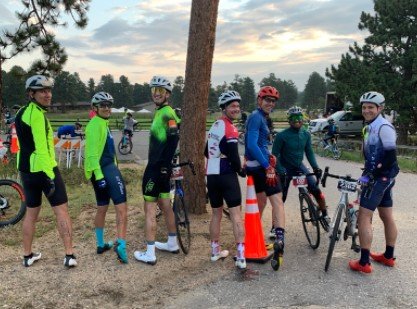
Three brave ResFrac riders took on the Triple Bypass rider in Colorado on August 21. The Triple Bypass is a famous Colorado ride stretching 110 miles and climbing 11,000 ft between Evergreen, CO and Vail, CO. Egor Donstov, Janz Rondon, and Garrett Fowler rode this year, sporting ResFrac jerseys and lively Mongoose tattoos. While Egor and Garrett enjoyed the views, Janz powered up the climbs, finishing in eighth in a field of over 500 riders in the 40+ category.
ResFrac user meeting
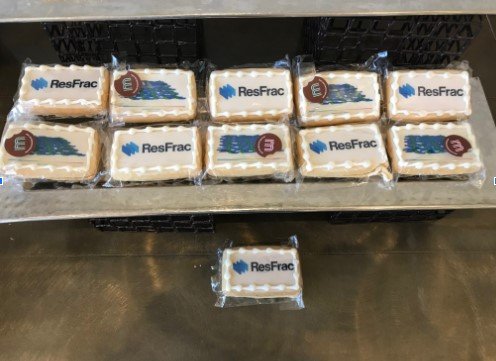
Last month we held our third annual ResFrac Symposium, where users presented case studies and panel discussions on industry topics. This year’s lineup featured six operator-speakers as well as guests from the DOE and an independent consultant. We had several talks centered around core workflows enabled by teams using ResFrac: collecting data, facilitating multidisciplinary discussions, calibrating to field diagnostics, and performing economic optimization of prospective designs.
ResFrac Endurance Team: Race Reports

The team has been consistently busy over the last few months, but somehow along the way, our ResFrac Endurance team hasn’t stopped racing and training, setting and achieving goals. We have some race reports to share about the last few months of achievements. Join us in cheering for our ResFrac crew!
ResFrac Updates: New Website, New Logo, and New Crack Propagation Algorithm (MuLTipEl)
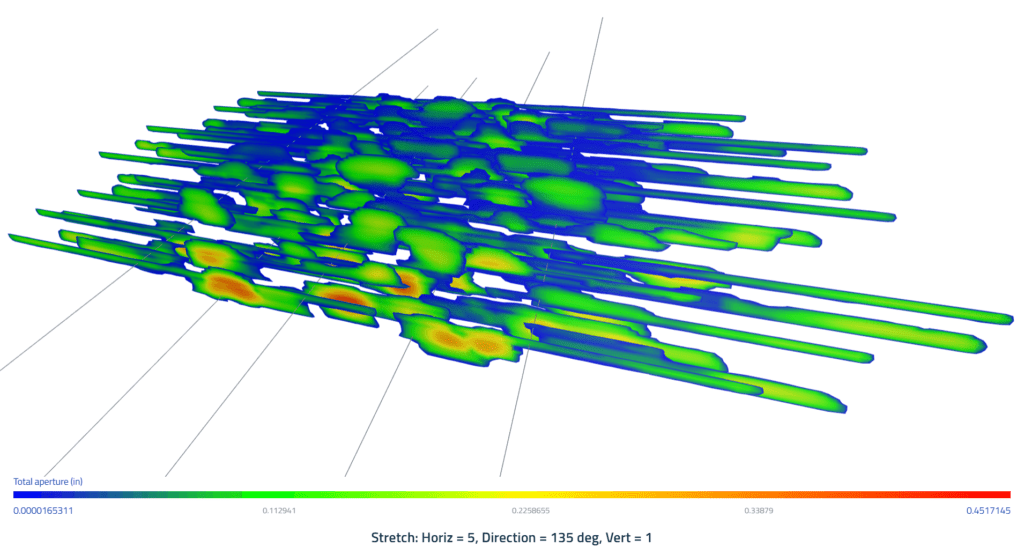
ResFrac is releasing Egor Dontsov’s new crack propagation algorithm, MuLTipEl, a major new development in the field of fracture modeling. The algorithm tracks the position of the crack tip within each crack element, giving us unlimited spatial resolution to handle propagation across thin layers, and enables high accuracy 3D crack propagation calculations, even if using a relatively coarse mesh and accounts for detailed layering and heterogeneity of the formation.
ResFrac Endurance Team
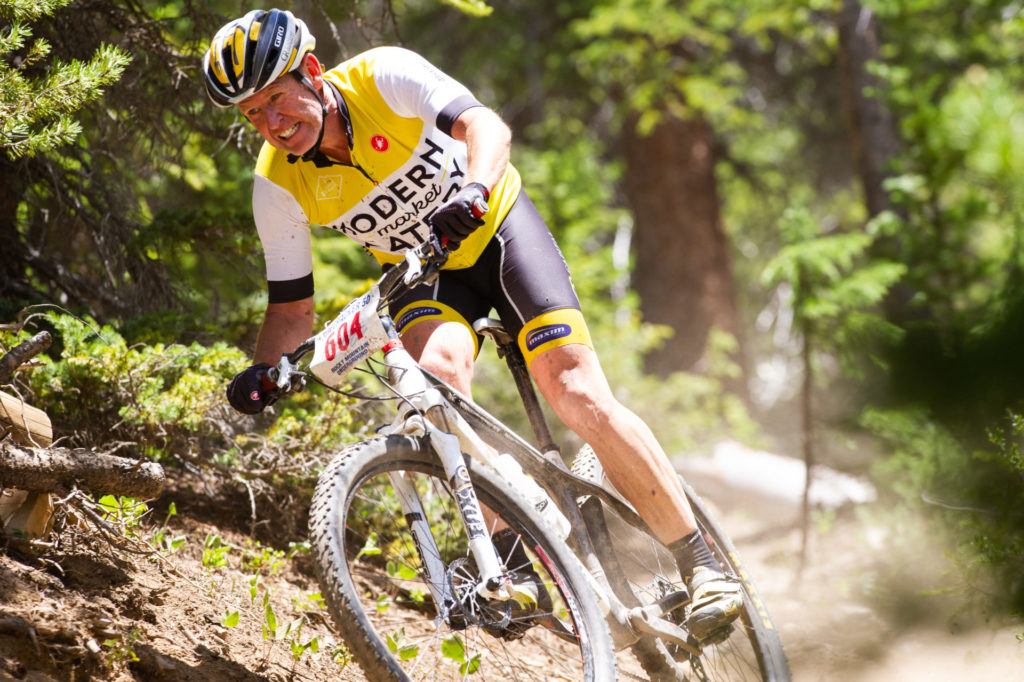
The ResFrac team has been going full speed this year! At our ‘virtual water-cooler’, I noticed that we have quite a few team members who are endurance and/or competitive athletes and did interviews to learn more about our athletic pursuits and how we have been able to fit athleticism in even around the most challenging schedules and in the craziest of years. Here are a few things I learned…